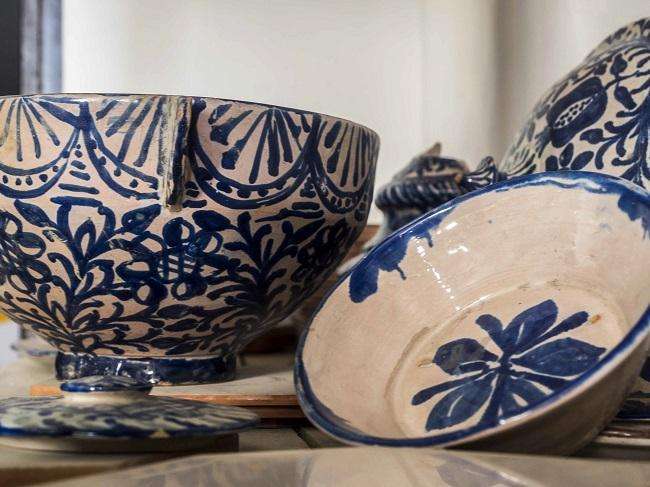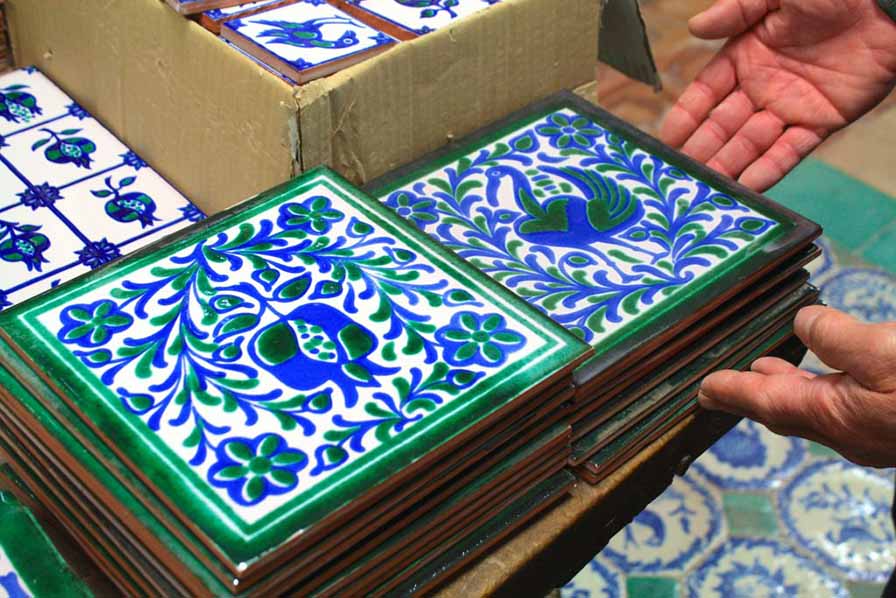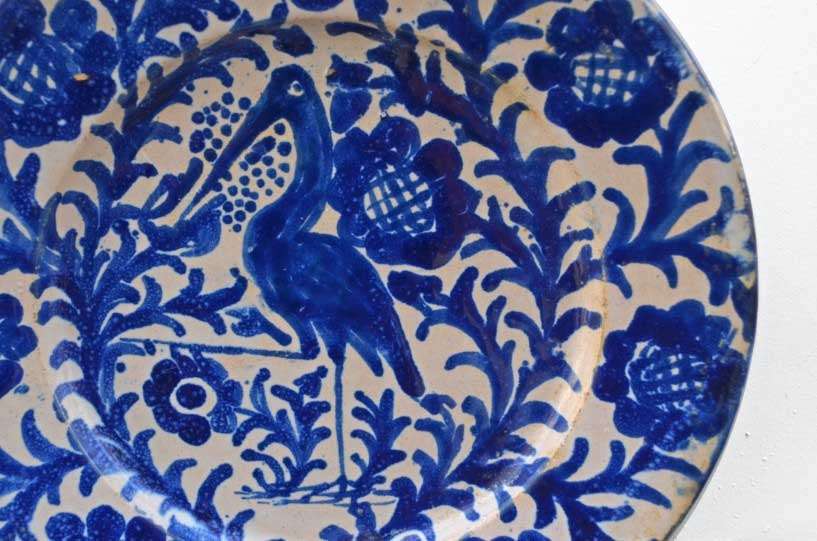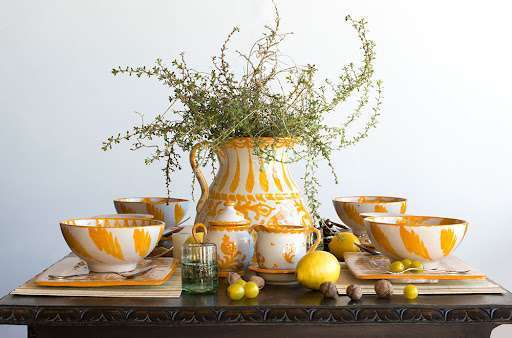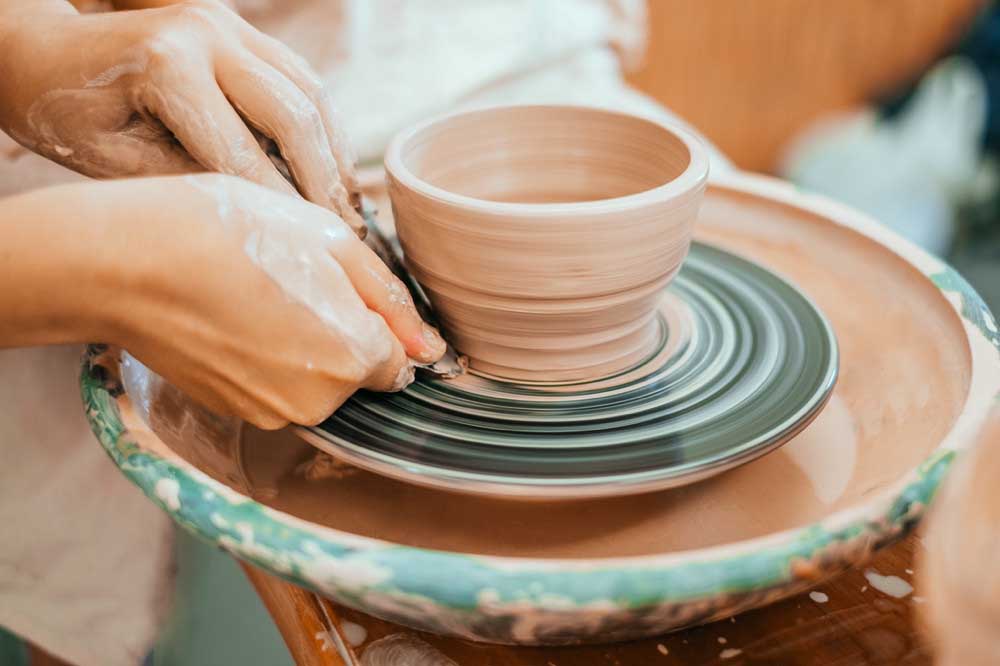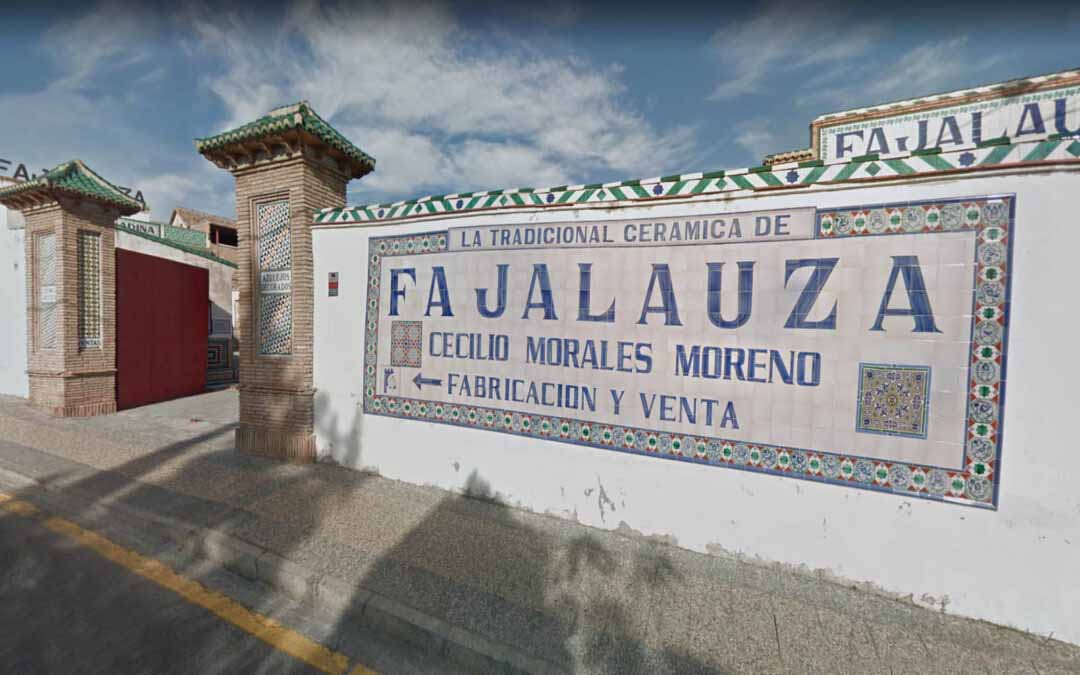FAJALAUZA CERAMICS: crafts with history
The Fajalauza is a popular type of pottery, originally made in the Albaicin of Granada, which is characterized by its blue or green decoration of various plant motifs.
The pottery tradition of Fajalauza ceramics dates back to 1517 (16th century), although it would not be known by that name until the first half of the 19h century.
These hand-painted ceramic pieces continued to be used for the construction and decoration of interiors (crockery) and exteriors (tile patios).
Origin and history of the Fajalauza ceramics
As we have already mentioned, the first indications of this ceramic come from the beginning of the 16th century. Although perhaps it already existed in the final years of the 15th century. However, it did not bear this name of the Fajalauza at that time, but the name of the pottery family that made it.
It was a craft linked exclusively to the Morales surname, who arrived in Granada after Christian conquest, although its origin is not known. In Granada a very particular style of pottery was born, which has remnants of the pre-existing styles during the Middle Ages in Catalonia, Teruel, Ubeda, Triana, Talavera, etc. Those first Christians of the Morales family established their workshop bellow the Fajalauza gate, attached to the very wall of Alabaicin and above what would be, from 1636, the Convent of San Antonio.
However, despite the influences that this pottery had, the one now known as Fajalauza was created at that time in a unique way. Its origin is Christian, its modus operandi is Arab. This is due to the fact that Moorish ovens were used in the elaboration of this and that the way of working it is contemplated under the Mudejar influence.
At the beginning of the elaboration of this Fajalauza pottery, it was distinguished by its simple style where white tones were used, alternating these with blue or green.
The design of this ceramic changed over time towards one where a large number of motifs abounded in addition to vegetables: the representative fruit of the pomegranate, the birds or the flowers. In the same ceramic item, several of these figures were embodied that kept the company in more vivid colours, which were added to those that had already existed before.
The process of making Fajalauza ceramics
At the beginning of the 20th century, the technique used to make this ceramic that is so characteristic in Granada was to use a wheel excavated in the ground and an Arab oven inherited from the Nasrid period. Unfortunately, this oven is already in disuse when introducing the new machinery with the arrival of electricity. Today, despite the new machinery and innovations, a completely handmade manufacturing process is still carried out.
In order to preserve this way of making Fajalauza ceramics by hand, the Fajalauza-Cecilio Morales Foundation was created. whose purpose is none other than to maintain this authentic ceramics with the Fajalauza style through its promotion and carrying out different activities such as creating a Fajalauza ceramics school.

